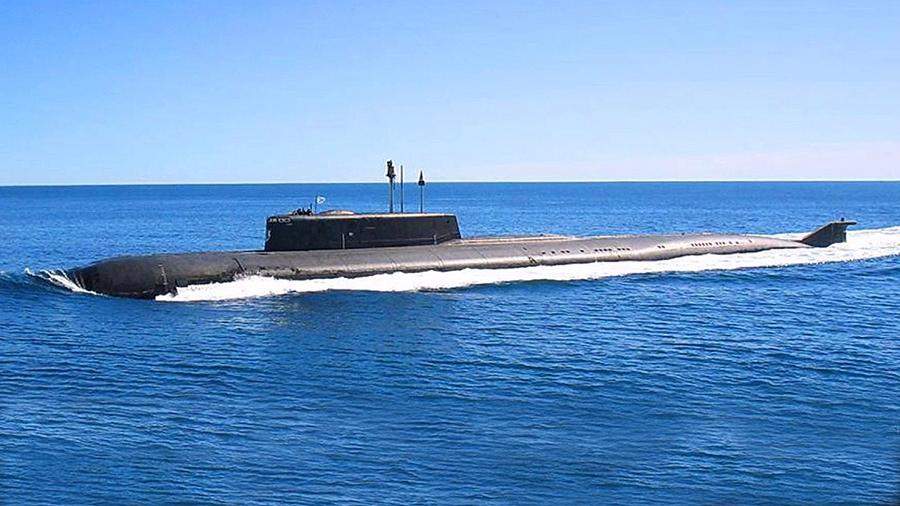The idea of the Belgorod submarine concept was first mentioned in 2019. It was expected to be delivered to the Russian Navy in 2020, but the trials and testing were delayed due to the Covid-19 pandemic.
But in July this year, the Russian Navy finally took delivery of what is the world’s longest known submarine. The maker touts it as a research vessel, but many speculate it is a platform for espionage and possibly nuclear weapons.
The submarine was turned over in the port of Severodvinsk, and experts say it is a modified version of Oscar II class guided-missile submarines. They are made longer with the aim to eventually accommodate the world’s first nuclear-armed stealth torpedoes and equipment for intelligence gathering.
Military experts believe that if Belgorod can help add those capabilities to the Russian fleet, it will set the stage for another Cold War under the ocean in the next decade.
The Belgorod is 608 feet long, making it longest submarine in the ocean today, even longer compared to the US Navy’s Ohio class ballistic submarines that are 569 feet long.
Construction history
The construction of the Belgorod submarine was originally laid down in July 1992. But it wasn’t until 2019 that it became a hot topic.
It was originally laid down as pennant number 664 of the Oscar II class cruise missile submarines. The name Belgorod was given on April 6, 1993, after the Russian city with that name.
![]()
In 1995, crew training began at the Obninsk-based 510th Naval Training Center named after L.G. Osipenko of the Russian Navy.
Two years later, in 1997, construction was put on hold because of the economic crisis hitting the country as a result of the collapse of the Soviet Union. At the time, the submarine was three-quarters finished. The crew was disbanded in 1998 and submarine was left unfinished.
In 2006, the Ministry of Defence included the finish of the construction of the Belgorod in the investment plan. The ministry looked for options to finish the submarine, including selling it to the Indian Navy, which would have financed the completion.
Then, in 2009, a redesigning of the submarine came and was developed for the Project 885, Yasen-class submarines. In 2012, Admiral Vladimir Sergeyevich Vysotsky, said that the submarine would be completed as a special project vessel. By December 2012, the Belgorod received the official designation, Project 09852.
The plan for commissioning was set in 2018, and a crew was formed again. In April 2019, the Belgorod was taken out of the covered dry dock and put afloat. Captain 1st rank Anton Alyokhin commanded the ship, but the end project was delayed by the coronavirus pandemic.
Finally, in July 2022, the submarine joined the Russian Navy.
Characteristics
The Belgorod has gone a long way since it original design. The process began with a 505ft long hull and was lengthened to 603ft since then.
In June 2019, US military expert H.I. Sutton published satellite image of the Sevmash shipyard, showing the Belgorod along K-549 Knyaz Vladimir, with the former visibly longer and wider.
![]()
In November 2015, the vessel’s status was changed to Poseidon, which is a Russian weapon system designation 2M39. It is a remotely operated underwater vehicle with a 10,000km range that can dive to a depth of 1,000m.
It is designed to deliver nuclear warheads for the destruction of coastal infrastructure as a second nuclear strike options.
Some sources believe that the Belgorod can also operate as the mother ship for a single nuclear-powered mini submarine of the 18511 project, which is the Paltus type.
What makes it special?
Now, why do the West fears that the Belgorod can be the entrance point into a new Cold War underwater? It is all about the features that make the Belgorod a special submarine.
What sets it apart is its mission. According to reports, it will carry Poseidon nuclear-capable torpedoes, which are designed to be launched from hundreds of miles away and to sneak past coastal defences by traveling along the sea floor.
![]()
It is a completely new category of weapons that will reshape naval planning in both Russia and the West. According to a US Congressional Research Service report in April, Poseidon type missiles are intended as retaliatory weapons, designed to hit back at an enemy after a nuclear strike on Russia. And the Belgorod can carry up to eight such missiles.
In a 2018 speech, Russian President Vladimir Putin touted the Poseidons, saying, “They are quiet, highly maneuverable and have hardly any vulnerabilities for the enemy to exploit”.
Theoretically speaking, if armed with conventional warfare, Poseidon could be used against targets like aircraft carrier groups, shore fortifications, and infrastructure.
Now, some military experts have doubts. It is still a technology in development, both the torpedo and the platform. Some west military experts do not expect the Poseidon torpedoes to be deployed until 2027.
The conflict in Ukraine is showing that Russian advanced weapons are not the silver bullets Russia claims them to be. Instead, they do suffer from reliability issues, and there is every reason to believe that an intercontinental-range nuclear-powered torpedo will have its fair share of problems.
![]()
But what Belgorod does is change the underwater game. It is the first in a fleet of four submarines that could carry Poseidon torpedoes. Two of them will be in Russia’s Pacific Fleet, and two in the Northern Fleet.
Other navies will likely want to counter it. The Belgorod can reinvigorate the underwater game of cat and mouse between the US Navy, the British Royal Navy and the Russian Navy. It could lead to a new Cold War in the Arctic, North Atlantic, and North Pacific.



